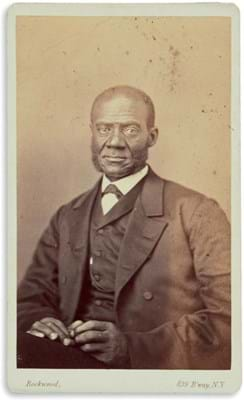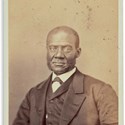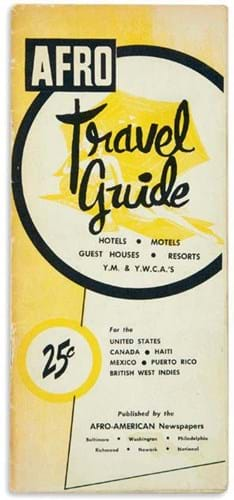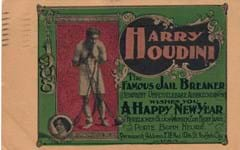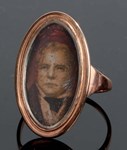The many institutional purchases included the two photographic items illustrated above.
Bid to $12,000 (£9755) was a rare 1860s carte-de-visite photograph of the Rev Henry Highland Garnet, an abolitionist who supported armed rebellion and was regarded as a radical even by such ardent abolitionists as Frederick Douglass and William Lloyd Garrison.
In 1865 Garnet made the first address by an African-American to Congress and later served as US ambassador to Liberia.
Numerous African-American families who escaped from Virginia made for Point Lookout or other Union camps in nearby Maryland as their initial destination, where they were declared free as “contraband of war”.
Photocard project
Estimated at $1000-1500 but sold for $26,000 (£21,140) was a small photocard portrait by a New Hampshire photographer, Lafayette V Newell, then based in Point Lookout. Flanking the older, raggedly dressed man in the photograph are two children – but all three are most likely ‘contrabands’.
Two other highlights, both record-breakers, were a copy of Campbell E Simm’s famous Night Club Map of Harlem of 1933, at $22,000 (£17,885), and an undated, but probably 1957 issue of the Afro Travel Guide that made much more than expected at that same sum.
A tall, slim pamphlet running to 36pp, the latter first appeared in the early 1940s as a rival to the annual Negro Motorist’s Green Book, which had been launched in 1936. In 2015, Swann sold a rare 5th edition of that earlier guide at $18,000 (then £12,090).
The day’s top lot, a smallish printed reward notice of March 1848, sold for $30,000 (£24,390), again to an institution.
Offering $250 for their capture, it sought the return of three related negro girls, Maria, Susan and Harriet Johnson. Their ages ranged from 25 down to 13, and they had escaped from the Georgetown (DC) home of Charles A Burnett, a leading silversmith who had produced work for Washington, Jefferson and many other congressmen.
The poster also bore numerous manuscript additions and corrections aimed at more precisely identifying the missing slaves.


